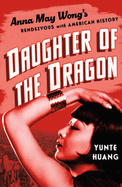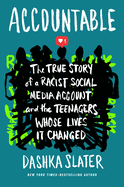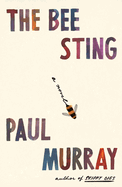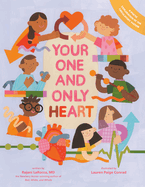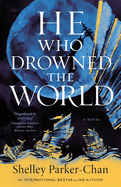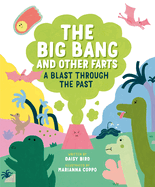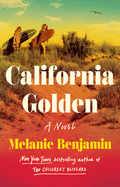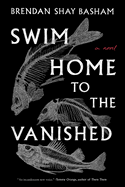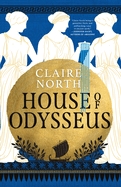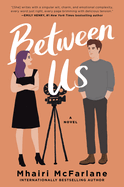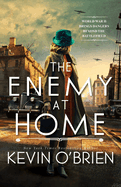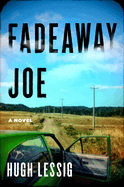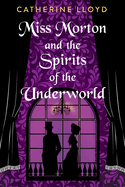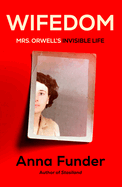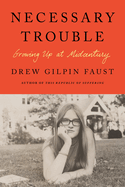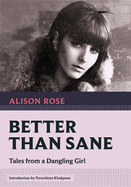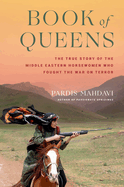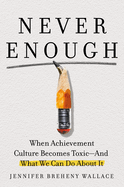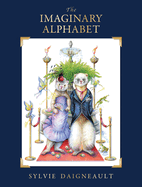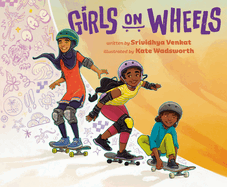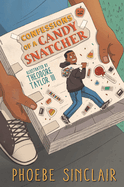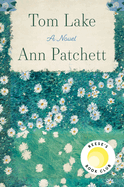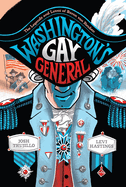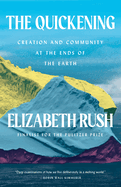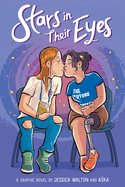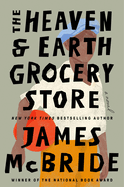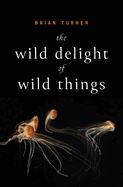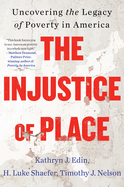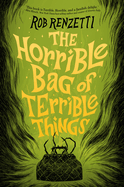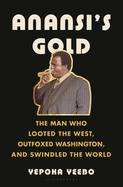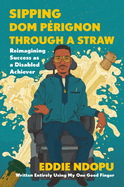Friday, August 25, 2023
We have quite a nonfiction line-up this week, including Yunte Huang's "superb biography" of Hollywood's first Chinese American movie star, Daughter of the Dragon: Anna May Wong's Rendezvous with American History; and Japanese graphic master Susumu Higa makes his U.S. debut with Okinawa, "a breathtaking compilation" of two previous works: Sword of Sand, which highlights the onslaught of World War II in Okinawa, and Mabui, which spotlights the ongoing postwar U.S. military occupation. Plus, award-winning journalist Dashka Slater "brilliantly dissects a true-crime story" in Accountable: The True Story of a Racist Social Media Account and the Teenagers Whose Lives It Changed. And so many more!
And for those contemplating long car trips or simply lounging in a hammock to wrap up the summer, few treats are greater than hearing the author of a memoir "Tell It Like It Is."
The Bee Sting
by Paul Murray
Not since Hanya Yanagihara's A Little Life has an author tormented characters in a doorstop of a novel as entertaining as Paul Murray's breakneck page-turner The Bee Sting. In present-day Ireland, Dickie Barnes runs his town's Volkswagen dealership, but sales have faltered, and catalytic converters have been mysteriously disappearing from customers' vehicles. Dickie's wife, Imelda, worries that these troubles might cramp her profligate style. Money wouldn't be her first loss in life: she was originally slated to marry Dickie's younger brother, Frank, but he died young. She married Dickie instead, but on their wedding day, a bee got stuck in her veil and stung her in the eye.
Think that's bad? It's mild compared to other punishments Murray (The Mark and the Void; Skippy Dies) metes out over 600 pages. No one is spared--not Imelda and Dickie's teenage daughter, Cass, eager to live where "everyone doesn't look like they were made out of mashed potato"; nor 12-year-old son, PJ, who likes to practice telepathy; nor Big Mike, the cattle farmer for whom Imelda develops feelings. This novel is more of a family saga than Murray's previous efforts, but his humor is still very much in evidence. It addresses everything: sexuality, climate change, secrets and resentments, capitalism vs. idealism, and more. As one character puts it, "either we make a serious change to the way we live, or we destroy ourselves." He is talking about climate change, but the same sentiment applies to many situations in this endlessly inventive work. --Michael Magras, freelance book reviewer
Discover: Family resentments, bad choices, and more bedevil the cast of The Bee Sting, Paul Murray's entertainingly sadistic novel about a garage owner in Ireland, his wife and kids, and assorted calamities.
California Golden
by Melanie Benjamin
"The surf giveth, and the surf taketh away--thus said the Surf God every morning, noon, and night in his church, which was the universe, the planet, California, the beach, the waves." In California Golden, Melanie Benjamin's (The Swans of Fifth Avenue; The Aviator's Wife) euphoric prose transports readers to 1960s Southern California. Carol Donnelly makes a name for herself on the male-dominated waves of the Southern California coastline. As she spends her days at the beach and her nights dreaming about the ocean, her daughters, Mindy and Ginger, are left to figure out how to include themselves in their absent mother's life. Mindy, wanting to avoid things like "wearing the same clothes three days in a row," devises what she calls "the Plan," which involves accumulating absences at school that also give her more time surfing with their mother. Mindy's natural talent on a surfboard and Ginger's desperation to keep her family together push and pull the sisters' relationships with their mother and each other like the tide.
Mindy's and Ginger's alternating perspectives reflect how each copes with the struggles of an unconventional childhood. Mindy's attempt to rise above her past exposes the consequences of relentless ambition, and Ginger's longing for community reveals the dangers of desperate desires. The Donnelly girls' narratives, followed by Carol's, are nuanced, punctuated with raw emotions--justified, unjustified, perhaps unforgivable. The Southern California sun illuminates these deeply flawed characters, who are taking steps toward coming to terms with their past and creating a brighter future. --Clara Newton, freelance reviewer
Discover: This novel, set in 1960s Southern California, follows a surfing mother and her two daughters struggling with an unconventional family dynamic.
Swim Home to the Vanished
by Brendan Shay Basham
Strikingly original and captivating prose characterizes Brendan Shay Basham's first novel, Swim Home to the Vanished, a work of literary magical realism. Protagonist Damien is gutted by the recent death of his brother, Kai, which follows the years-earlier disappearance of their parents. Kai is presumed to have drowned, though it takes 30 days for his body to materialize. The power of the loss is literally transformative for Damien: he grows gills behind his ears, and he abandons his existing life as a chef in search of a space that will allow him access to the water that can either heal him or bring him closer to his brother. Grief occupies his every thought and permeates his body.
His migration takes him southward to a village where Carla, the adult daughter from a family of local brujas, is being buried; she was killed by a person or persons unknown. Damien attracts attention by stumbling into the funeral service as he enters the town. Ana María--restaurant owner, grieving mother of the slain woman, and the local matriarch who is feared by the locals and her remaining daughters alike--keeps Damien on a steady and incapacitating diet of mescal, and employs him at the family business. Daughter Marta agitates to bring whatever force Damien still possesses to her side of the equation. When the inevitable storm finally arrives, the brujas' power struggle plays out, and Damien's epic journey takes him, finally, to the sea--in an unforgettable, epic, and poetic resolution. --Elizabeth DeNoma, executive editor, DeNoma Literary Services, Seattle, Wash.
Discover: Swim Home to the Vanished, Brendan Shay Basham's debut novel, is a stunning piece of contemporary magical realism about grief and familial trauma.
House of Odysseus
by Claire North
Intrigue, usurpation, and murder demand all the wits of a queen in a precarious position in House of Odysseus, the second volume of the Songs of Penelope series by Claire North (Ithaca; The Pursuit of William Abbey). Odysseus still has not returned from the Trojan War. His son, Telemachus, has gone to seek him, and that leaves Penelope to maintain order and dodge the intentions of those suitors who presume that Odysseus is dead. When a ship arrives from Mycenae carrying Orestes and Elektra, Penelope is drawn into an even larger power struggle. Orestes, the new king of Mycenae, killed his mother, Clytemnestra, to avenge the death of his father, Agamemnon, and now it appears the Furies are driving him mad as punishment. Penelope suspects an earthlier cause. Either way, Elektra needs her help to protect her brother and his throne from their uncle, Menelaus, who has designs on Ithaca as well.
In spite of her novel being narrated by Aphrodite, North largely takes a realistic approach, preferring the political schemes and petty egotism of kings to the squabbles of gods and goddesses. Aphrodite's voice is blunt and sometimes modern, taking the shine off of any glory from Mount Olympus. A dose of mystery ups the stakes as Penelope, Elektra, and even beautiful and underestimated Helen jockey to maintain their positions in a patriarchal world. Fans of Circe by Madeline Miller and Daughters of Sparta by Claire Heywood will find much to enjoy in this revisionist epic. --Kristen Allen-Vogel, information services librarian at Dayton Metro Library
Discover: The women of the Odyssey and the Oresteia take center stage in this gripping tale of politics and murder.
Between Us
by Mhairi McFarlane
Mhairi McFarlane (Mad About You; Just Last Night; If I Never Met You) is gifted at writing novels that look like humorous romantic comedies on the surface but pack an emotional punch. In Between Us, McFarlane explores the unraveling of a decade-long relationship and the impact of that breakup on a close-knit group of friends.
Roisin, a teacher, got together with her partner, Joe, long before he was a famous screenwriter. But when Roisin and Joe join their old friends for a weekend at a country house for a triple celebration--one friend's birthday, the engagement of another, and the debut of Joe's TV show--she is appalled to realize that either fame has twisted Joe, or perhaps she never really knew him. His new show is all about her and their friends, and it has a main character who is clearly based on Joe--a character who serially cheats on his girlfriend. Reeling that Joe would reveal private details of their lives, even fictionally, she splits up with him. Roisin, after the breakup, is further surprised by the ripples in her friendships, her love life, and even her complicated relationship with her mother.
Clever, witty, and yet a bit sad, Between Us is a thoughtful look at the impacts of infidelity and mistrust. Anyone who has ever had their friend group impacted by someone's breakup or divorce will connect with the story. Perfect for fans of Jojo Moyes or Sophie Cousens, Between Us is an irresistible novel. --Jessica Howard, freelance book reviewer
Discover: This irresistible story from the author of Just Last Night explores the aftermath of a breakup, and the secret little details that make up any long-term relationship.
The Enemy at Home
by Kevin O'Brien
A sympathetic protagonist in World War II-era Seattle grapples with anxiety about her husband, stationed in North Africa, and fear for her own safety, as a serial killer stalks "Rosie the Riveter" coworkers. In The Enemy at Home, Kevin O'Brien's 22nd thriller, Nora Kinney raises two teenagers and supports the war effort--and is eerily convinced that she is somehow linked to the murderer.
Historic and suspenseful, The Enemy at Home portrays wartime life in the U.S. in 1943 in evocative detail--gas and grocery ration coupons, victory gardens, blackout curtains to foil feared enemy bombers, iconic swing-band tunes--while building the mystery of the macabre deaths of the Boeing B-17 airplane plant's women "war workers." Nora's teenage son has become moody and secretive, and her beloved younger brother's edgy demeanor during a surprise visit between navy assignments is disconcerting. A handsome artist rents the garage apartment and, though she welcomes the income, even his pleasant nature arouses Nora's suspicion. Nora is wracked with questions and fears when reports reveal that the bizarre murders involve her brands of lipstick and nylon stockings. Twisting through surprise reveals during the month-long series of crimes, the mystery's resolution invites an appreciation for Nora's resilience, an homage to the traditional depiction of "Rosies." O'Brien (They Won't Be Hurt) skillfully incorporates other portrayals of suspected "enemies at home," including victims of racism and homophobia, and Japanese Americans relocated to internment camps, in this gripping and thoughtful atmospheric thriller. --Cheryl McKeon, Book House of Stuyvesant Plaza, Albany, N.Y.
Discover: In this atmospheric historical thriller that follows the murders of World War II "Rosie the Riveter" aircraft workers, a woman fears she knows the killer--and that perhaps he's coming for her next.
Mystery & Thriller
Fadeaway Joe
by Hugh Lessig
In Hugh Lessig's fantastic thriller Fadeaway Joe, a diagnosis of early-onset dementia sets bar bouncer Joe Pendergast on a path of revenge against the crime boss who fired him. Joe and Maxie were boyhood friends; Maxie taught young Joe how to box, eventually hiring him as a bouncer and bill collector when Maxie became a bar owner and expanded into illegal gambling. The boss-employee friendship goes south when money goes missing and Joe learns he has early-stage dementia. Maxie fires Joe ("because my brain is turning to oatmeal") and takes Kathy, Joe's girlfriend, as his own new squeeze. Left jobless and alone, Joe plots to kill Maxie and, using the gun he keeps under his pillow, himself before his mind fails completely. But a mysterious hooded figure and a busybody neighbor give Joe an idea: he knows how to take down Maxie and leave a more shining legacy than He Was Once Really Good with His Fists.
Lessig honed his writing skills as an award-winning journalist, and the tight pacing and witty dialogue in Fadeaway Joe make it a promising debut novel. These pages reveal a deep understanding of the senselessness of dementia and the damage it wreaks, giving readers a peek into both the scary and comedic thoughts of someone afflicted with the disease. The author invites readers to experience the regret, depression, and heart of a violent and complicated main character struggling desperately to make peace with his inevitable demise. --Paul Dinh-McCrillis, freelance reviewer
Discover: When a mob leg-breaker develops dementia and is fired because of it, he plots revenge against his former boss in this gut-punching thriller.
Miss Morton and the Spirits of the Underworld
by Catherine Lloyd
Agatha Christie meets a Regency-era Upstairs, Downstairs, with comedy-of-manners interludes, in Miss Morton and the Spirits of the Underworld, the second novel in Catherine Lloyd's capable and cunning Miss Morton series. Set in 1838 London, this follow-up to Miss Morton and the English House Party Murder finds Lady Caroline Morton still smarting: following a family scandal that rendered her penniless, she was forced to sign on as companion to well-to-do widow Mrs. Frogerton. Miss Morton still feels as though "she existed in a netherworld--neither a servant nor a worthy guest." Wanting to protect her employer from "gifted flimflammers," Miss Morton accompanies Mrs. Frogerton to a séance hosted by Madam Lavinia Dubois. Miss Morton is sufficiently unnerved by Madam's apparent knowledge of Miss Morton's own past that she later agrees to a private meeting with the medium, initiated by her friend Dr. Harris, who considers the woman "a fraud and a charlatan." They arrive at Madam's house only to find her dead.
Dr. Harris becomes Great Scotland Yard's prime suspect, leaving his vindication to Miss Morton and Mrs. Frogerton. The women have an agreeable Watson-Holmes dynamic, with Mrs. Frogerton displaying an animated eccentricity as she veers between playing detective and seeing her marriage-minded daughter through "the London Season." If Lloyd's ending isn't quite worthy of the adept plotting that precedes it, Miss Morton and the Spirits of the Underworld nevertheless succeeds as a diverting caper and a whip-smart skewering of a social system that leaves unmoneyed women with little agency. --Nell Beram, author and freelance writer
Discover: Agatha Christie meets a Regency-era Upstairs, Downstairs in the capable and cunning Miss Morton series' second outing, in which a medium dies under suspicious circumstances.
Science Fiction & Fantasy
He Who Drowned the World
by Shelley Parker-Chan
Shelley Parker-Chan completes her Radiant Empire duology, a vibrant, queer historical fantasy epic set in 1356 CE China, with a dark, furious, and thrilling power struggle in He Who Drowned the World. Once a starving peasant girl who stole her dead brother's identity to reach for greatness, Zhu is now the Radiant King, one of a select few who possess the mystical Mandate of Heaven needed to rule over the Mongol Empire. Her rise to power cost her a hand and nearly her life on the sword of the misogynistic eunuch General Ouyang, who will stop at nothing to kill the current Great Khan, his father's murderer. Zhu and Ouyang have been adversaries, but Zhu feels a kinship with Ouyang: neither fits into their society's rigid gender binary. She convinces him to ally their armies against the Great Khan, with the hopes of giving Ouyang his revenge and Zhu the throne. Rivals threaten their ambitions, including a manipulative queen, one of the commanders Zhu deposed in the prequel, She Who Became the Sun, and the younger brother of the prince Ouyang loved but murdered for vengeance. However, the greatest threat to their ambitions may be Ouyang himself--if he ever learns the secret of Zhu's gender.
This action-packed, emotional finale surpasses its predecessor for sheer brutality and knife-twisting surprises. Tragedy and heartache abound, and characters' moral choices are dishwater gray, but ultimately the adventures of Zhu remain inspiring as she follows her philosophy of achieving the unthinkable: "Change the world, and make it possible." --Jaclyn Fulwood, blogger at Infinite Reads
Discover: The finale of Shelley Parker-Chan's Radiant Empire duology, set at the founding of the Ming dynasty, is dark, brutal, and ultimately inspiring.
Romance
Moving Forward
by Shelley Shepard Gray
Wholesome, small-town life is what Shelley Shepard Gray does best in her fiction, including in her Amish-themed titles (Her Only Wish) and her contemporary romances (the Rumors in Ross County series). In Moving Forward, the second installment in her tenderly drawn Woodland Park Firefighters series, she introduces readers to an immensely likable cast of characters with lives unsettled by past personal trauma.
The novel starts in Woodland Park, Colo., when a fire erupts at the garden center owned by Kristen Werner. Kristen, originally from Houston, Tex., is a successful local businesswoman whose romantic life--and wedding plans--came to a screeching halt after her fiancé learned she couldn't have children. Kristen suffers from pulmonary arterial hypertension. When new-in-town, hunky firefighter Greg Tebo, a former army officer with PTSD who served 12 years in Iraq and Afghanistan, arrives with the fire crew to tend to the garden shop blaze, Kristen faints. Greg, a transplant to Colorado from West Virginia, is instantly smitten with Kristen. He checks up on her at the hospital the next day, and the two begin a friendship that sparks romantic feelings. But are Kristen and Greg willing to put their troubled pasts behind them, trust each other, and rekindle love in their lives?
Moving Forward is an emotionally dramatic, gentle romance of ordinary people healing their wounded hearts in a close-knit community. Readers will be eager for the next entry in this hopeful, heartfelt series. --Kathleen Gerard, blogger at Reading Between the Lines
Discover: Moving Forward features a wholesome, small-town romance between an emotionally wounded firefighter and a local businesswoman forced to face up to their pasts.
Graphic Books
Okinawa
by Susumu Higa, transl. by Jocelyne Allen
Japanese graphic master Susumu Higa makes his U.S. debut with Okinawa, translated into English by Jocelyne Allen. It's a breathtaking compilation of two collections: Sword of Sand (1995), which highlights the onslaught of World War II in Okinawa, and Mabui (2010), which spotlights the ongoing postwar U.S. military occupation. War wasn't supposed to come to these remote islands but, by 1945, most were ravaged in the decisive Battle of Okinawa. Higa transforms his family's experiences into haunting storytelling in Sword of Sand, about his mother, who miraculously protected her young children, and his father, who became a POW in Hawaii. War ends in Mabui, but finding peace after physical and cultural destruction remains a challenge for survivors and later generations amidst stifling colonization: Okinawa makes up just 0.6% of Japan but houses 75% of all U.S. military bases in the country. Higa inevitably chooses to focus on the humanity, including (enemy) American soldiers who survived because of local intervention.
Higa's engrossing black-and-white panels are testimony to little-known (especially in the West) history and a universal reminder of war's unfinished consequences. He graphically presents Okinawa's everyday inhabitants, always in the forefront. The simple clarity of his line drawings of people are an effective contrast to more detailed backgrounds, as if a reminder that humanity needs no further embellishments. Most of the stories end with notes about their provenance and, often, a photograph to emphasize the reality contained within the narratives. In an insightful interview at book's end, Higa ciphers Okinawan specifics into global awareness with convincing parallels to the Russia-Ukraine War, underscoring the timely urgency of this book's U.S. arrival. --Terry Hong, BookDragon
Discover: A spectacular single volume comprising two manga collections introduces U.S. audiences to manga master Susumu Higa's chilling, incisive visions of war and its aftermath in his native Okinawa.
Biography & Memoir
Daughter of the Dragon: Anna May Wong's Rendezvous with American History
by Yunte Huang
Before color-blind casting was a thing, Anna May Wong (1905-1961) lit up the silver screen. Yunte Huang's superb biography of Hollywood's first Chinese American movie star, Daughter of the Dragon: Anna May Wong's Rendezvous with American History, doubles as a reckoning with the country's attitudes about Asian people in Wong's day; as Huang writes, "As a symbol of forbidden love, she embodied America's love and hate for the Orient, an inner war with itself in the crucible of race."
Wong was born in California and raised outside of Los Angeles's Chinatown. She dreamed of becoming a movie star and worked her way up from extra to bigger roles--when she could find them. In her heyday, "no China flick could do without her," Huang writes, "but no director could feature her as the lead": the few roles written for Asian characters would typically go to Caucasians in yellowface. At 56, Wong died of a heart attack that may have been precipitated by chronic liver disease resulting from years of drinking, which helped her cope with professional disappointments.
Huang (Charlie Chan) minutely examines the historical and cultural contexts in which Wong quietly blazed her trail, spotlighting her awareness that her dragon lady roles were insulting to Chinese people. With 60-odd films to her credit, Wong did the best that an Asian actor in Hollywood could do in her time. Huang suggests that for Wong, this wasn't enough, but for readers of the tremendously elucidating and moving Daughter of the Dragon, it will be. --Nell Beram, author and freelance writer
Discover: This superb biography of Anna May Wong, Hollywood's first Chinese American movie star, doubles as a reckoning with American attitudes about Asian people in Wong's day.
Wifedom: Mrs. Orwell's Invisible Life
by Anna Funder
The devastating emotional cost of being married to a serially philandering writer is one of the sensitive topics explored in Anna Funder's extraordinary third book, Wifedom: Mrs. Orwell's Invisible Life. A devoted fan of George Orwell's work, Funder (Stasiland; All that I Am) was inspired to write Wifedom after discovering that Orwell's first wife, Eileen O'Shaughnessy, a brilliant Oxford graduate, was largely erased from history. Not only did Orwell neglect to credit her for her immense support, but his biographers barely mentioned the woman who worked on Animal Farm with her husband, supported him financially, and edited all his work--and whose literary style greatly influenced him.
The building blocks of Wifedom are letters written by Eileen during her marriage to Orwell from 1936 to 1945 and addressed to her best friend from college. Inspired by Eileen's "electrifying" voice, Wifedom is a skillfully crafted counternarrative of the Orwells' marriage story, unveiling the woman "cancelled" by patriarchy. Surprising details include the fact that Orwell's masterpiece, Nineteen Eighty-Four, bears a title similar to the dystopian poem Eileen wrote in college, "End of the Century, 1984." Funder, offering a glimpse of her own struggles against modern-day patriarchy, considers why her subject subjugated her career and, tragically, her health in service of a husband who cheated repeatedly and often openly, including with Eileen's friend Lydia. Importantly, Funder distinguishes between Orwell the great writer and Orwell the deeply flawed husband, determined to avoid the "tyranny" of cancellation because "from there, no art comes." Wifedom is an enthralling saga of how the talented woman behind Orwell's success was "buried first by domesticity and then by history." --Shahina Piyarali, reviewer
Discover: Wifedom is a skillfully crafted marriage drama confronting the patriarchal forces that erased from history Eileen Orwell's contributions to her husband's success.
Necessary Trouble: Growing Up at Midcentury
by Drew Gilpin Faust
The late Congressman John Lewis often talked about getting in "good trouble, necessary trouble" to effect social and racial change. Drew Gilpin Faust, Civil War historian and the first female president of Harvard University, borrows Lewis's words (once directed at her) for the title of her memoir, Necessary Trouble. Faust (This Republic of Suffering) describes her moral and philosophical awakening and paints a portrait of a midcentury world shaped by forces including postwar American prosperity, the fear of communism, the Civil Rights Movement, and the United States' doomed involvement in the Vietnam War. On her journey from a comfortable Virginia childhood to the all-female intellectual environments of Concord Academy and Bryn Mawr College, Faust learned to follow her conscience and to question the long-standing, constrictive traditions that governed the lives of Southern white women.
Faust, a self-confessed tomboy, was often at odds with her socialite mother, who longed for her only daughter to be "a lady." With a self-reflective tone, Necessary Trouble shows Faust turning her historian's lens onto her own life: detailing the forces that shaped both her and her country, the strengths and weaknesses of the all-white intellectual environments that formed her, and the powerful sense of justice and the pursuit of truth that have come to define her life. Engaging and thoughtful, with vivid details and a wry sense of humor, Necessary Trouble is a nuanced portrait of midcentury America and an exploration of the ways it directly foreshadowed--and even created--our current political moment. --Katie Noah Gibson, blogger at Cakes, Tea and Dreams
Discover: Civil War historian and Harvard President Emerita Drew Gilpin Faust's engaging and thoughtful memoir chronicles her personal and intellectual awakening as a young woman.
Better than Sane: Tales from a Dangling Girl
by Alison Rose
In 1985, when she was 40, Alison Rose took a receptionist job at the New Yorker, for which she would eventually contribute "Talk of the Town" pieces. Her time at the storied magazine is part of the territory she covers in Better than Sane: Tales from a Dangling Girl, which comprises 12 personal essays that are, by turns, funny, vivacious, and bleak. Better than Sane, originally published in 2004, seems to have been written with the hindsight of a wistful nostalgic. Following Rose's amused and amusing reflections on her privileged Palo Alto, Calif., childhood, the book proceeds in the promising-young-woman-takes-Manhattan vein. Rose offers filigreed details of her physical environment while chronicling her friendships, romances, breakups, and ensuing depressive episodes. When she lands her New Yorker job, it somewhat unnerves her, as a reliable self-saboteur: "I wasn't entirely comfortable about having got what I wanted. I was breaking my own rules."
Some readers will find Rose's preoccupation with male approval knotty: "Whatever he wanted me to do, I did it" is not an atypical line. But at times Rose swerves from doormat-like compliance to burgeoning feminism; on the stigma attached to being a single woman, she writes, "It's exhausting to be in the company of married people... it forces me into a state of emergency alert, in which I have to rescue myself from interrogation and public disgrace." If Nora Ephron had applied her wit and acuity to the lifestyle celebrated in Sex and the Single Girl, it might have read something like Better than Sane. --Nell Beram, author and freelance writer
Discover: Alison Rose's time at the New Yorker starting in the 1980s is part of the territory covered in these 12 personal essays that are funny, vivacious, and bleak.
Surreal Spaces: The Life and Art of Leonora Carrington
by Joanna Moorhead
Readers unfamiliar with the life, art, and writings of the surrealist artist Leonora Carrington will get an exceptional introduction in Surreal Spaces by Joanna Moorhead, a British journalist whose father was Carrington's cousin. Moorhead had always known Carrington as "the black sheep of our family," yet when in 2006 the Guardian hired her to write about her relative, she discovered that Carrington was "Mexico's most famous living artist." They met for conversations in Carrington's Mexico City kitchen over the next five years. After Carrington's death in 2011, Moorhead traveled to "the houses, landscapes and countries [Carrington] had inhabited" to learn of "the influences, stories, and places that helped to make Leonora Carrington who she was, both as an artist and as a woman."
In this amply illustrated volume, Moorhead covers the highlights of Carrington's career: her privileged childhood growing up Catholic in England, her affair with the much-older surrealist Max Ernst, her time in Spain's Santander sanatorium after a psychological breakdown, and her eventual move to Mexico City for most of her final 60 years. What distinguishes this book are the tidbits Moorhead obtained during their conversations, such as that, when Carrington lived in New York in the 1970s, she was so poor that "she sometimes ate ice cream because it was the cheapest way of getting calories inside her." Carrington called surrealism the belief "that nothing is ordinary; that everything in life is extraordinary." That spirit permeates every page of this handsome book. --Michael Magras, freelance book reviewer
Discover: In this amply illustrated biography, journalist Joanna Moorhead provides an excellent introduction to the life, art, and writings of British-born surrealist Leonora Carrington.
Book of Queens: The True Story of the Middle Eastern Horsewomen Who Fought the War on Terror
by Pardis Mahdavi
Simultaneously a national epic and an intimate family portrait, Book of Queens is Pardis Mahdavi's love song to her family, Persia, and the Caspian horses her grandmother bred. The book follows Maryam in early 20th-century Iran, and Louise in mid-20th-century America. In alternating chapters, their voices narrate the events and struggles that shaped them into the women they would be at the moment of their fateful meeting. During her early years of marriage, Maryam discovers a group of women just over the border in Afghanistan; they ride horses, an activity she could engage in only by defying her father, and train as warriors. Maryam and Louise, years later, join forces to revive the breed of almost-extinct Caspian horses, eventually sending their horses to the Afghan horsewomen who protected their region from the Taliban for centuries, only to be dismissed by American forces during the War on Terror.
Mahdavi draws on her family's history as well as her expertise as an anthropologist to seamlessly move between the narration of people's lives and the exposition that provides key details of Persia and Iran's political history, largely unknown to those who merely see the Middle East through the lens of its contemporary conflicts. The title evokes the Shahnameh or Book of Kings, the great Persian epic that Mahdavi (Hyphen) references throughout the book for its portrayal of Gordafarid, a warrior woman who successfully defends Persia against would-be invaders. In Book of Queens, Mahdavi pays tribute to many centuries of warrior women while honoring the struggle her family has experienced, and celebrating the beauty of her homeland. --Dainy Bernstein, postdoc in children's literature, University of Illinois Urbana-Champaign
Discover: Powerful and intimate, Book of Queens tells the story of a centuries-long line of warrior women, and the two women whose horse-breeding helped them fight the Taliban.
Parenting & Family
Never Enough: When Achievement Culture Becomes Toxic--and What We Can Do About It
by Jennifer Breheny Wallace
Even before the onset of the Covid-19 pandemic, it was clear American teenagers were facing a mental health crisis, one that manifested itself in alarming rises in the rates of depression, anxiety, and other psychological ailments. In Never Enough, Jennifer Breheny Wallace, a journalist and mother of three adolescent children, identifies the root cause in an "environment of unrelenting pressure" created by the single-minded pursuit of achievement and status. While sympathetically exploring the dimensions of the problem, she also offers some thoughtful approaches to parenting intended to create a more humane, and sane, culture for young people.
Wallace's analysis is rooted in a survey she conducted in early 2020 with the assistance of a researcher from the Harvard Graduate School of Education. More than 6,000 parents quickly responded, offering tangible support for the published reports on the dire state of adolescent mental health.
Wallace's fundamental prescription is a concept she calls "mattering," shorthand for "the feeling that we are valued and add value to others." Instead of prizing children only for the achievements that will pave the way for entry into elite colleges and high-status jobs, she argues, mattering can serve to "correct the lies that our society tells them: that they only matter if they're performing, if they're achieving."
It will take cooperation among parents, educators, and policymakers to address this crisis before the damage to a generation of children becomes too profound and lasting. Wallace's book is a useful starting point for those committed to that task. --Harvey Freedenberg, freelance reviewer
Discover: By valuing children for who they are rather than what they do, Jennifer Breheny Wallace argues, we can begin to alleviate some of the serious mental health problems afflicting American children.
Children's & Young Adult
Accountable: The True Story of a Racist Social Media Account and the Teenagers Whose Lives It Changed
by Dashka Slater
Award-winning journalist Dashka Slater (The 57 Bus) brilliantly dissects a true-crime story, exhibiting its different parts for readers and presenting a balanced narrative that illustrates the nuances inherent in all interpersonal interactions, whether in person or online. Accountable centers on a teen's private social media account, where he posts racist and sexist content for the entertainment of his friends.
One afternoon Charles, a 17-year-old Korean American, creates what his male friends view as a humorous meme. At his friends' urging, Charles starts a private Instagram account to feature memes like the first--actually a racist attack on a classmate. "His model was the stuff he saw online... some of which was funny precisely because it was offensive." He fills the account with sexist and racist "jokes" that use minority girls from his high school as targets. The account has only a dozen followers, but it doesn't remain private for long. The exposure of the content sets off a series of events--suspensions, protests, legal actions--that embroil parents, students, and staff in the ugliness of Charles's online activity.
While readers' instinctive response may be to say Charles deserves what he gets, Slater's meticulous research from multiple perspectives highlights the difficulties of attempting to define absolute right and absolute wrong. Slater ultimately shows readers that, while racist actions can be unconscious, they remain offensive and harmful, and the perpetrator should be held accountable. Silence, too, she communicates, is a form of condoning racism and contributes to the problem. But Slater does not solve problems or answer the questions; instead, she scrupulously illustrates the complexity of this case, and reminds the audience that there are no quick fixes. --Jen Forbus, freelancer
Discover: Journalist and author Dashka Slater explores an actual online racism scandal that reveals scars on the beating heart of a small town in California.
Your One and Only Heart
by Rajani LaRocca, illus. by Lauren Paige Conrad
In the congenial Your One and Only Heart, physician and Newbery Honor author Rajani LaRocca (Red, White, and Whole; Seven Golden Rings) introduces young readers to the wonders of the heart through playful poems that describe characteristics of the vital organ. Debut artist Lauren Paige Conrad's colorful collage-style illustrations complement the spirited, edifying text.
LaRocca and Conrad offer an inviting and accessible glimpse into a mysteriously complex part of the human body. The text points out that the heart can be contradictory: "your heart is constant" but "your heart is changeable" as well; it is "hidden" but also "noticeable." It is these contradictions, LaRocca suggests, that make the heart the special organ it is. The author also provides comparisons that make complex concepts accessible for young readers, such as this explanation of diastole (the "time between the squeezes"): "consider a dropper:/ If you don't fill it with liquid,/ nothing can squirt out." Conrad uses gouache, crayon, and colored pencil to create art in a rainbow of colors featuring a spectrum of diverse characters. Readers of different races, abilities, and genders will likely see themselves reflected in the charming illustrations, showing that beneath different exteriors, everyone possesses a heart.
Your One and Only Heart marvelously explains "the captain" of "Team Cardiovascular," how readers can take care of it, and how to appreciate its many wonders. The book also includes fascinating supplemental information at its conclusion. This delightful picture book is full of figurative--and literal--heart. --Jen Forbus, freelancer
Discover: A Newbery Honor-winner and a debut illustrator team up to introduce young readers to "the captain of Team Cardiovascular" in an entertainingly educational ode to the heart.
The Big Bang and Other Farts: A Blast Through the Past
by Daisy Bird, illus. by Marianna Coppo
How else were Daisy Bird and Marianna Coppo supposed to follow their previous collaboration, Whose Poo? In the equally uninhibited picture book The Big Bang and Other Farts: A Blast Through the Past, the returning collaborators deliver not only unremitting humor but also something to think about between laughs.
As the book begins, a rat dad and his two rat pups settle on the couch to watch a documentary about, as Dad puts it, "some of the most important moments in history!" First up is the story of the universe's creation: "Before there was anything, there was just this silent space," intones the documentary's narrator. Suddenly, a "PFFFT!" erupts in the darkness on-screen: "It's made a black hole!" insists the narrator. Next comes the story of humans' evolution from animals: "PFFFT!" emits a fish, clearing the ocean of its denizens. On it goes, with Dad finally fulminating, "History is not just one fart after another!" Unfortunately for Dad, his argument is weakened when, while bending over to reach the TV's remote, he makes a bit of history of his own ("PFFFT!").
While The Big Bang and Other Farts is ceaselessly funny, readers may find themselves eager to earnestly refute the book's, er, alternative facts. As for the art, Bird's book-length gassy gag might have carried the whiff of the icky if not for Coppo's gouache illustrations, which are bright, tidy, and otherwise suited to the kind of kids' book that doesn't hypothesize a supremely unsavory reason for the Mona Lisa's smile. --Nell Beram, freelance writer and YA author
Discover: This picture book, in which a rat family watches a documentary that posits that flatulence created the world, delivers not only unremitting humor but something to think about between laughs.
The Imaginary Alphabet
by Sylvie Daigneault
A menagerie of merry and meticulously embellished animals mingles with witty wordsmithing and a whimsical search-and-find component to create an extravagant abecedary for an extensive audience in Sylvie Daigneault's glorious, oversized picture book, The Imaginary Alphabet.
Twenty-six sophisticated scenes await attentive readers within this elaborate alphabet storybook. A brief phrase announces the primary animal, descriptor, and action, but readers can find in the paired illustration as many as 20 items beginning with the featured letter. "Agile Alligators Attempting an Arabesque" appear, dancing beneath an arch adorned with acorns upon which sit albatrosses. "Lazy Lemurs Licking Lemon Lollipops" sit atop a log by a lakeshore with a ladle at one's feet for their lemonade, as lilies grow nearby. The featured animals span an impressive array of size, skin, or fur texture, and varying degrees of likely familiarity to young readers. Descriptive vocabulary includes words like "clumsy," "orchestrating," and "velvety," striking a playfully erudite tone without veering into pretentiousness.
Daigneault (C Is for Canada: Celebrating Our Nation) crafts fantastical scenes with attention to the tiniest detail. Each letter of the alphabet gets its own page, and the frisky sentence setting each scene melds beautifully with the artwork's spirited aesthetic. The careful selection of animals and paired objects, all outside of their natural environs while feigning a convincing normalcy, is immersive. The author/illustrator uses layers of colored pencil, digitally enhanced, to achieve her attentive artwork, which feels elegant and spacious while sustaining a fanciful tone with childish appeal. This is a dreamy addition to personal shelves and library collections. --Kit Ballenger, youth librarian, Help Your Shelf
Discover: A menagerie of merry and meticulously embellished animals mingles with witty wordsmithing and a whimsical search-and-find component in this glorious, oversized picture book.
Girls on Wheels
by Srividhya Venkat, illus. by Kate Wadsworth
Three best friends reunite at the skate park in this empathetic and empowering picture book by Srividhya Venkat (The Clever Tailor) and debut illustrator Kate Wadsworth.
In Girls on Wheels, three girls separately make their way to a park to meet up. Damini sneaks out early after finishing her chores, skateboarding "over bumps and potholes, whiz[zing] down the street." Sana, who wears a hijab and helmet, "glides against the wind." Anila, with a "once-broken arm," is driven to the park wondering if she's ready to skate again. When Anila arrives at the park, the "giant wave of concrete" that "looms like a sea monster" unnerves her, but her friends make her feel at home. As Damini and Sana soar on and fall off their boards, Anila stays seated. When a group of boys arrive and dare the girls to do the perfect drop-in, Anila hangs back. But Damini and Sana's faith in her, "like the cool sea breeze," blows away her doubts.
Venkat explains in her author's note that the book is inspired by the skateboarding revolution happening in India today. She skillfully uses short, lively lines of text and onomatopoeia to immerse readers in the action of the skate park. Wadsworth's dynamic mixed-media illustrations capture both minute, individual expressions and detailed scenery: eager Damini sneaks past a cow before skating by a food stall; compassionate Sana shares her parathas with puppies then skates past the bazaar; and trepidatious Anila stares down the ramp from the ledge. Venkat and Wadsworth's picture book is a lovely depiction of strong, supportive friendships, and girls being awesome. --Hadeal Salamah, blogger, librarian, freelance reviewer
Discover: Three best friends reunite at the skate park in this empathetic and empowering picture book.
Confessions of a Candy Snatcher
by Phoebe Sinclair, illus. by Theodore Taylor III
Phoebe Sinclair's debut, Confessions of a Candy Snatcher, is a fast-paced, thoughtful middle-grade novel about a Black tween who does some serious self-reflection after a night of candy-stealing goes wrong.
For the past two Halloweens, 12-year-old Jonas and his friends have competed over how many bags of candy they can snatch. Usually, the worst damage is a few bruised egos, but this Halloween one of his victims fights back. Jonas forgets all about it until notes start appearing in his locker: "I KNOW IT WAS YOU" and "WATCH YOUR BACK." Even though Jonas and his friends all promise to keep their game a secret, Jonas worries he might face consequences. As Jonas frets, his home-schooled Chilean friend, Concepción ("C."), begins creating a zine with the prompt, "What's the worst thing you ever did?" C. urges Jonas to write for her, which forces him to think more deeply about his role in the events of that ill-fated evening.
Sinclair's experience with zines shows in her lively and approachable text and significant use of white space, all of which allow young readers to sprint through the story. Even with such a fast pace, Sinclair carefully covers topics of morality, boundaries, and family dynamics. Grayscale, zine-style illustrations by Theodore Taylor III (illustrator, Little Shaq series) accompany Sinclair's text and bring Jonas's ideas to life. Confessions of a Candy Snatcher is a great book for tweens and anyone learning accountability and navigating tricky relationships. --Natasha Harris, freelance reviewer
Discover: In this reflective novel, a Black tween learns how to navigate the events of a seemingly fun Halloween night gone bad.
Shelf's August Stars
Tell It Like It Is
Tell It Like It Is
For those contemplating long car trips to wrap up the summer, or just lying on the beach or in the shade with a tall glass of iced tea, few treats are greater than hearing the author of a memoir read her own words (all downloaded from Libro.fm).
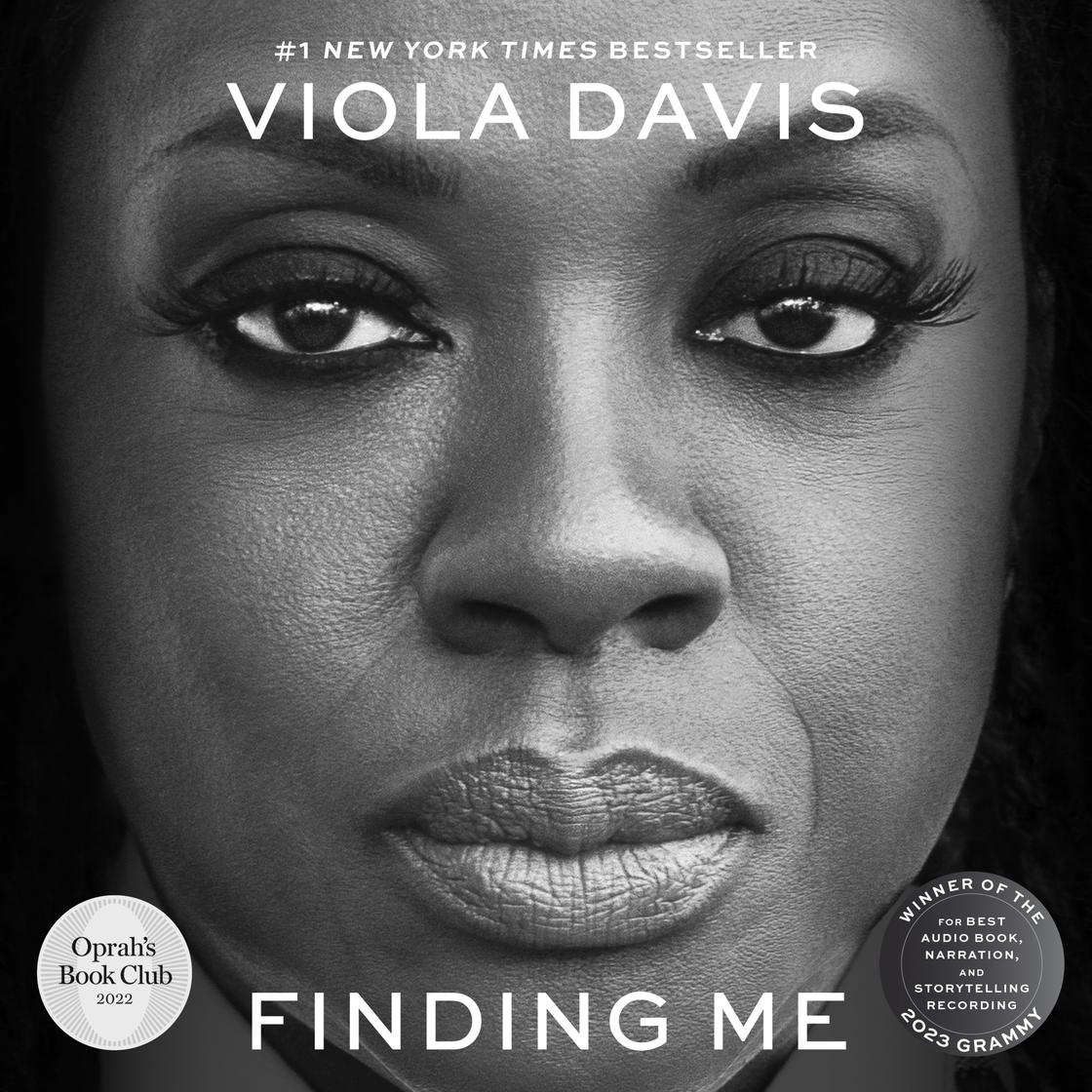 Finding Me, written and read by Viola Davis (HarperOne, $17.99 paper), won the 2023 Audie Awards' Audiobook of the Year, and this listener can see (hear) why. Davis held me rapt with her survival stories--living through hunger and poverty in Rhode Island while also working hard in school to excel; the looming presence of predatory older men; holding down jobs in high school despite long commutes, and using it all as grist for her performance mill. One of the standout scenes involves Davis's audition for Juilliard, and how her honesty and necessity combined for a climactic turn of events.
Finding Me, written and read by Viola Davis (HarperOne, $17.99 paper), won the 2023 Audie Awards' Audiobook of the Year, and this listener can see (hear) why. Davis held me rapt with her survival stories--living through hunger and poverty in Rhode Island while also working hard in school to excel; the looming presence of predatory older men; holding down jobs in high school despite long commutes, and using it all as grist for her performance mill. One of the standout scenes involves Davis's audition for Juilliard, and how her honesty and necessity combined for a climactic turn of events.
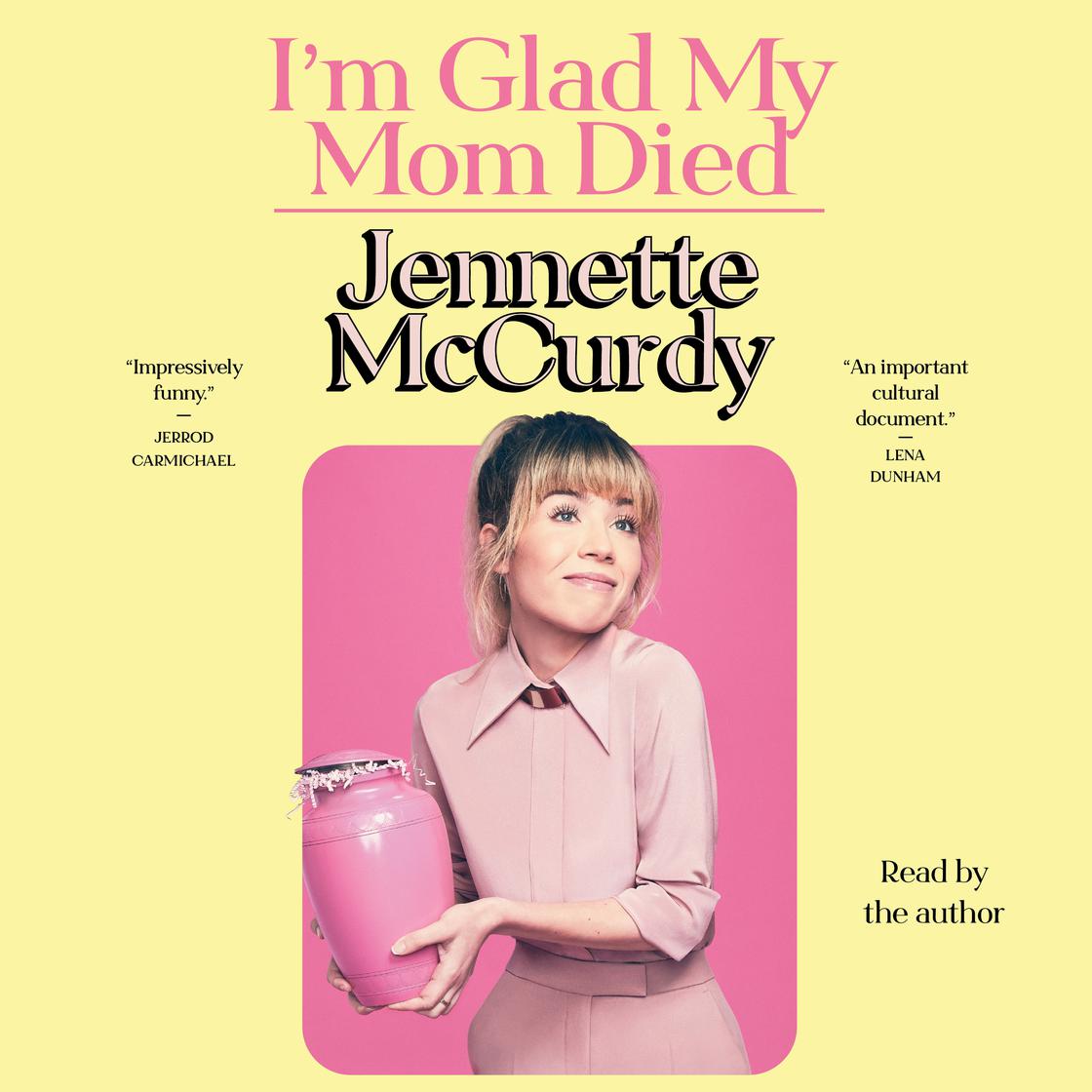 Another harrowing story of surviving childhood comes from Jennette McCurdy, who narrates her memoir I'm Glad My Mom Died (S&S, $27.99). Fans who grew up watching iCarly--and even folks (like me) who did not--will be amazed by what went on behind the scenes for the child actress who played Sam Puckett. The extraordinary observation derived from both Davis's and McCurdy's memoirs is that, as a child, you don't question the behavior of the adults around you; you believe everyone is having the same experience you're having, and this somehow allows you to keep getting out of bed in the morning to do what needs to be done to get through another day. What McCurdy's mother put her through would be incredible if we as an audience weren't hearing it directly from the survivor. She wound up in a career she'd never wanted, attempting to escape it in any way she could. Let's hope writing wins out, and we'll hear much more from McCurdy in the years to come.
Another harrowing story of surviving childhood comes from Jennette McCurdy, who narrates her memoir I'm Glad My Mom Died (S&S, $27.99). Fans who grew up watching iCarly--and even folks (like me) who did not--will be amazed by what went on behind the scenes for the child actress who played Sam Puckett. The extraordinary observation derived from both Davis's and McCurdy's memoirs is that, as a child, you don't question the behavior of the adults around you; you believe everyone is having the same experience you're having, and this somehow allows you to keep getting out of bed in the morning to do what needs to be done to get through another day. What McCurdy's mother put her through would be incredible if we as an audience weren't hearing it directly from the survivor. She wound up in a career she'd never wanted, attempting to escape it in any way she could. Let's hope writing wins out, and we'll hear much more from McCurdy in the years to come.
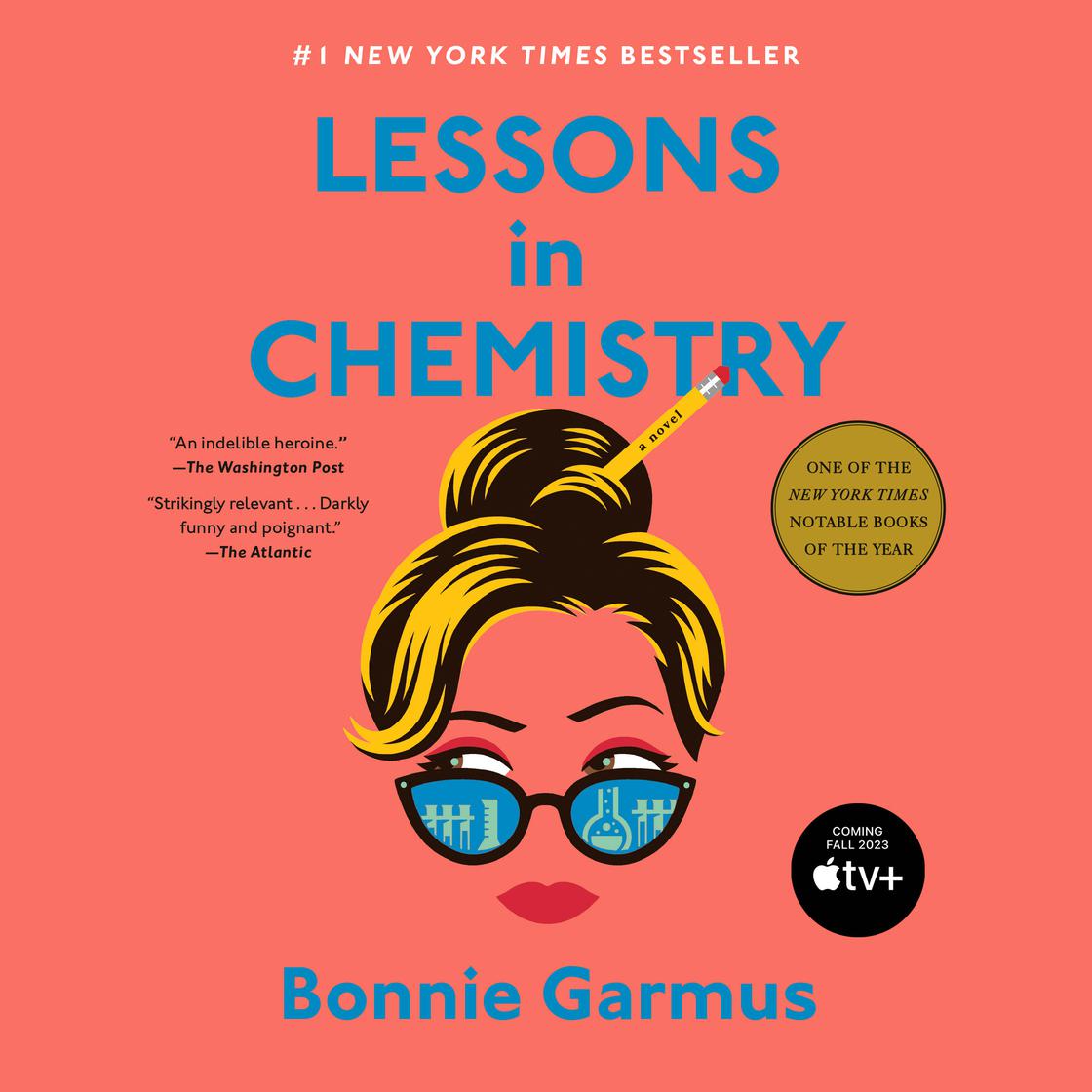 Lessons in Chemistry by debut author Bonnie Garmus (Doubleday, $29) may not be memoir, but listeners (and readers) will grow so fond of Elizabeth Zott, the stunningly beautiful chemist protagonist whose brilliance is overshadowed by her looks, that it may be hard to stop exercising or driving or whatever else you may be doing as you listen. Miranda Raison's narration perfectly captures Zott's almost naïve belief that truth and hard work will prevail in early 1960s Southern California, and her twisty road of having to give up the lab for a stint as a TV cooking show host, in order to fulfill another role she'd never wanted: mother. That Zott does both beautifully (though not without bumps along the way) is a tribute to her hardwon belief in herself and the way she inspires the women around her. If you listen now, you'll be ready for the TV series, with Brie Larson in the starring role, premiering October 13 on Apple TV+.
Lessons in Chemistry by debut author Bonnie Garmus (Doubleday, $29) may not be memoir, but listeners (and readers) will grow so fond of Elizabeth Zott, the stunningly beautiful chemist protagonist whose brilliance is overshadowed by her looks, that it may be hard to stop exercising or driving or whatever else you may be doing as you listen. Miranda Raison's narration perfectly captures Zott's almost naïve belief that truth and hard work will prevail in early 1960s Southern California, and her twisty road of having to give up the lab for a stint as a TV cooking show host, in order to fulfill another role she'd never wanted: mother. That Zott does both beautifully (though not without bumps along the way) is a tribute to her hardwon belief in herself and the way she inspires the women around her. If you listen now, you'll be ready for the TV series, with Brie Larson in the starring role, premiering October 13 on Apple TV+.
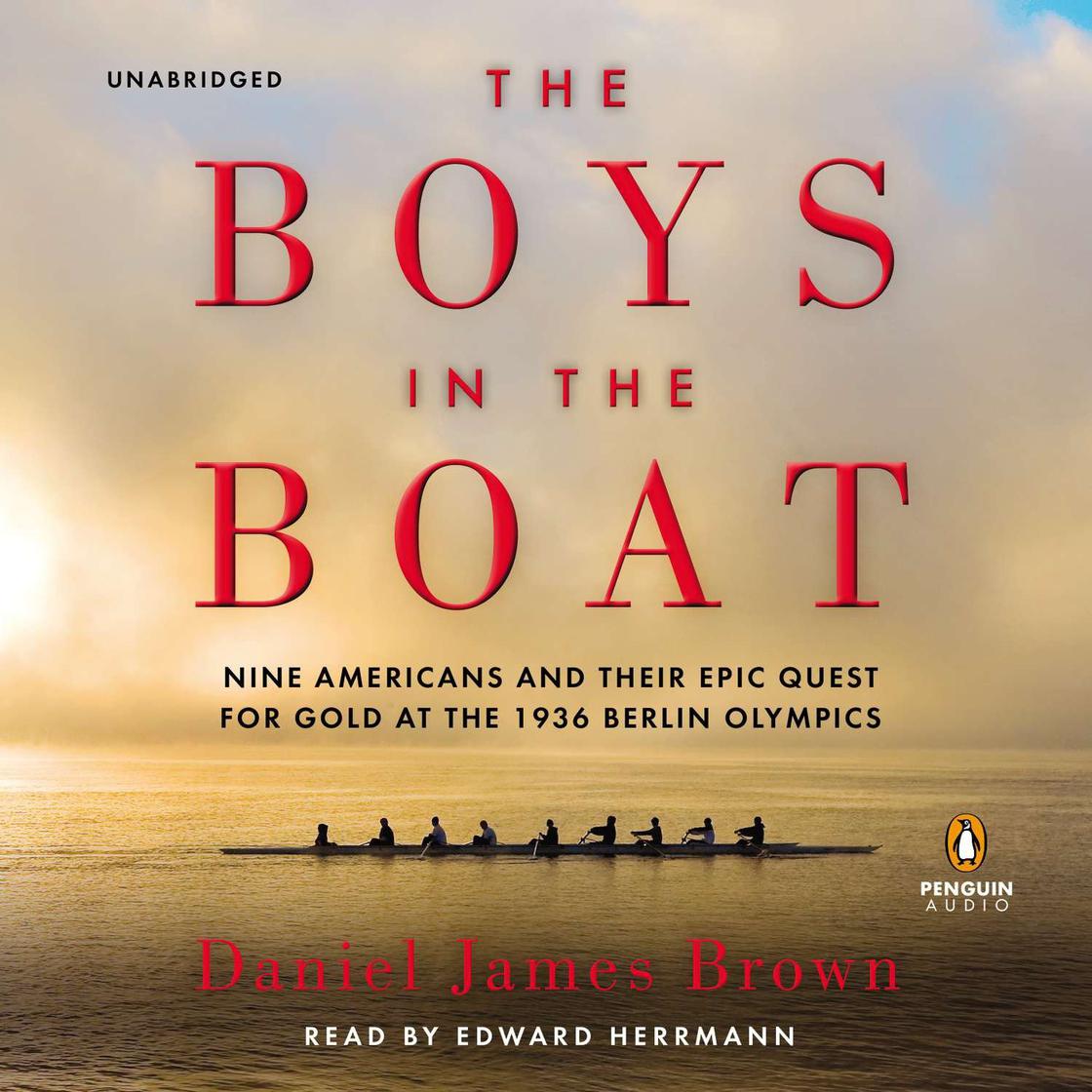 There's also a wonderful subplot about Zott's introduction to and mastery of rowing, which led me to... The Boys in the Boat by Daniel James Brown (Penguin, $19). It chronicles the true story of the unlikely rise of the University of Washington's crew team all the way to the 1936 Olympics in Berlin. Brown's words, and Edward Herrmann's reading of them, plunge readers into the lives of these young collegiate rowers, their coaches, coxswains, and the man who made their boat, George Yeomans Pocock. Pocock's quotes, which kick off most chapters, are worth the price of admission. Hearing what many of these young men went through--growing up during the Depression, their training, what they gave up to excel in school and on the water--makes one temporarily forget that we know they actually did make it to the Olympics. The undercurrent of Hitler's rise alongside that of the nine young men of Washington's crew only adds to the air of foreboding and suspense. George Clooney directed the film version, set for a December 25 release, which stars Callum Turner as Joe Rantz, the rower who first drew Daniel James Brown to this story. This is one for the entire family. How I wish I were listening to these four stories again, for the first time. --Jennifer M. Brown, senior editor, Shelf Awareness
There's also a wonderful subplot about Zott's introduction to and mastery of rowing, which led me to... The Boys in the Boat by Daniel James Brown (Penguin, $19). It chronicles the true story of the unlikely rise of the University of Washington's crew team all the way to the 1936 Olympics in Berlin. Brown's words, and Edward Herrmann's reading of them, plunge readers into the lives of these young collegiate rowers, their coaches, coxswains, and the man who made their boat, George Yeomans Pocock. Pocock's quotes, which kick off most chapters, are worth the price of admission. Hearing what many of these young men went through--growing up during the Depression, their training, what they gave up to excel in school and on the water--makes one temporarily forget that we know they actually did make it to the Olympics. The undercurrent of Hitler's rise alongside that of the nine young men of Washington's crew only adds to the air of foreboding and suspense. George Clooney directed the film version, set for a December 25 release, which stars Callum Turner as Joe Rantz, the rower who first drew Daniel James Brown to this story. This is one for the entire family. How I wish I were listening to these four stories again, for the first time. --Jennifer M. Brown, senior editor, Shelf Awareness
Book Candy
Book Candy
"Discover the Buddhist Diamond Sutra, the world's oldest surviving complete printed book (868 AD)." (via Open Culture)
---
Atlas Obscura explored the "daring desert pilots" who inspired Antoine de Saint-Exupéry's classic The Little Prince.
---
For a summer holiday reader's getaway, authors picked their most memorable fictional breaks for the Guardian.
---
"Rediscover the fine arts retro aesthetic of The Babysitters Club book series cover artist Hodges Soileau, courtesy of Messy Nessy Chic.
Rediscover
Rediscover: Keith Waldrop
 Keith Waldrop, whose first poetry collection was a finalist for a National Book Award in 1969 and who won the prize 40 years later with his Transcendental Studies: A Trilogy, died July 27 at age 90. The New York Times called Waldrop "far more than a poet. He was a well-regarded translator of French poetry and prose, was an artist whose collages were exhibited in solo and group shows, and ran a small press with his wife, the poet Rosmarie Waldrop." He retired from Brown University as Brooke Russell Astor Professor of Literary Arts & Comparative Literature in 2011, after more than 40 years with the school.
Keith Waldrop, whose first poetry collection was a finalist for a National Book Award in 1969 and who won the prize 40 years later with his Transcendental Studies: A Trilogy, died July 27 at age 90. The New York Times called Waldrop "far more than a poet. He was a well-regarded translator of French poetry and prose, was an artist whose collages were exhibited in solo and group shows, and ran a small press with his wife, the poet Rosmarie Waldrop." He retired from Brown University as Brooke Russell Astor Professor of Literary Arts & Comparative Literature in 2011, after more than 40 years with the school.
In the 1960s, while pursuing his Ph.D. in Comparative Literature at the University of Michigan, Waldrop, with co-editors James Camp and D.C. Hope, founded Burning Deck, a literary journal. After four issues, it was transformed into a book press, with Camp and Hope departing and Rosmarie Waldrop joining as co-editor. The press ran from 1961 to 2017 and published more than 200 titles, with the majority of books after 1990 being book-length, perfect-bound offset editions, often including letter press flourishes on the covers or title pages.
In addition to dozens of books of his own poetry, he also collaborated with Rosmarie Waldrop on a series of poems, eventually collected as Well, Well, Reality, which Roubaud described as the work of a third Waldrop--one who could exist only when the couple composed together, where each often took liberties, using literary devices that might be thought of as "belonging to the other." Waldrop also published two books of prose, Hegel's Family and Light While There Is Light.
As a translator, Waldrop earned the rank of Chevalier of Arts and Letters from the French government. His translations ranged from canonical writers like Charles Baudelaire and Paul Verlaine to French contemporaries like Anne-Marie Albiach, Jean Grosjean, Jacques Roubaud, and Claude Royet-Journoud, Brown University noted.
Soon after he graduated, the University of Michigan published Waldrop's first collection, A Windmill Near Calvary (1968), which earned him his first National Book Award nomination. The second one, for Transcendental Studies in 2009, won the prize. Over the course of decades in between, Waldrop "honed an eye for the ironic, a seeming detachment that was infused with an emotional and intellectual undercurrent that could astonish the reader in its capacity to bridge disparate thought with, if not logic, then perhaps something deeper, richer," Brown University wrote. "Keith's self-effacement was deliberate--his sense of the line between the real and the unreal always ready for reassessment." Transcendental Studies is available from University of California Press.


